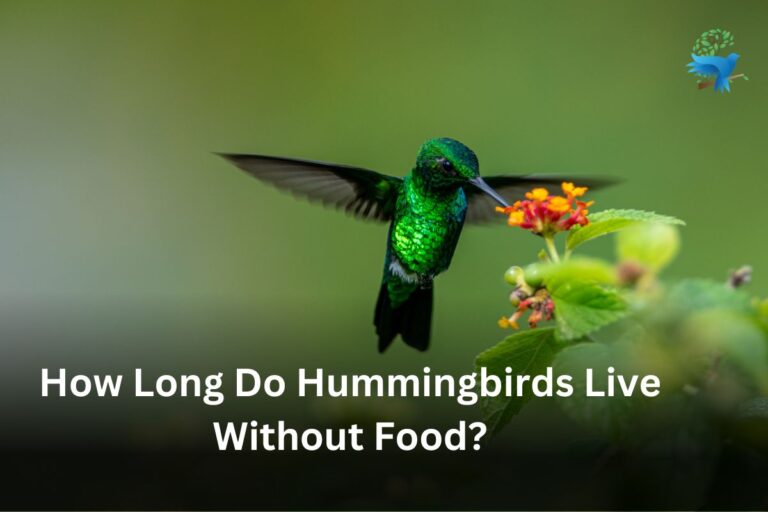Hummingbirds In New York
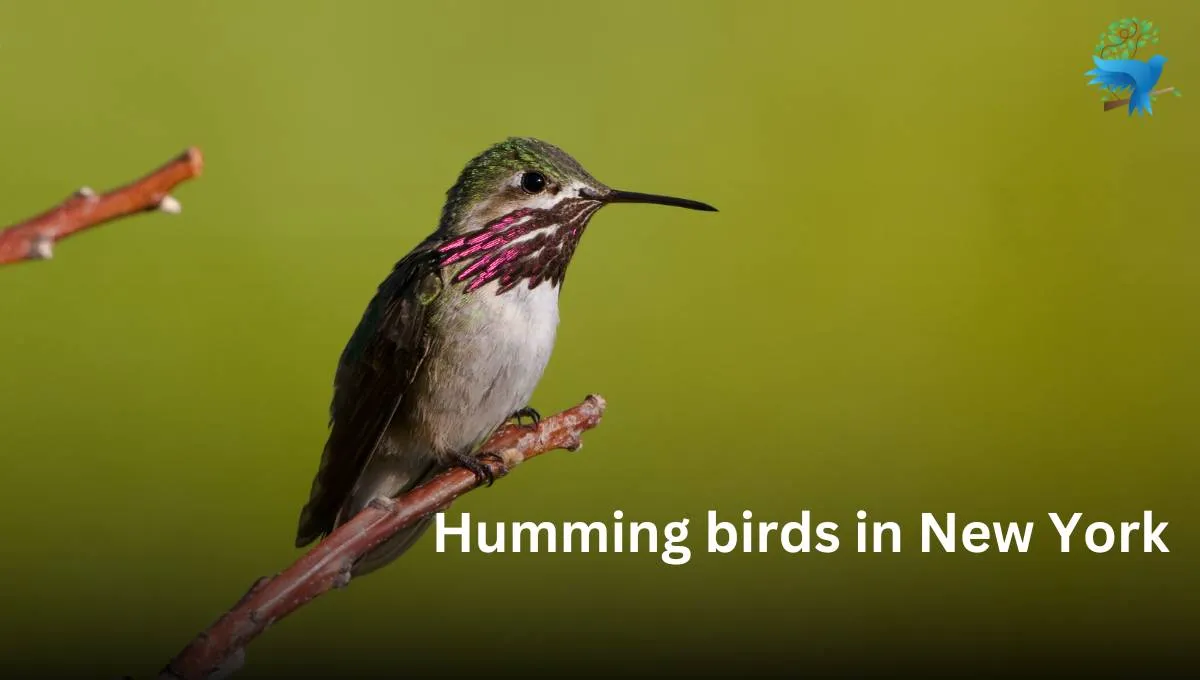
New York, a state in the northeastern United States, is known for its bustling city life, diverse culture, and rich history.
Amidst the skyscrapers and city lights, there exists a vibrant ecosystem teeming with various species of flora and fauna. One such marvel of nature that calls New York home is the hummingbird.
Hummingbirds are truly fascinating creatures. These tiny birds, known for their rapid wing beats and ability to hover in place, are a sight to behold. In New York, there are several species of hummingbirds, each with its unique characteristics.
So, if we want to know more about hummingbirds in New York then check this article where we talk about their appearances, habitats, diets, and more.
List of Hummingbirds in New York:
- Ruby-throated Hummingbird
- Anna’s Hummingbird
- Rufous Hummingbird
- Calliope Hummingbird
1. Ruby-throated hummingbird (Archilochus colubris)
The ruby-throated hummingbird, scientifically known as Archilochus colubris, is a small hummingbird.
They are bright emerald or golden-green on the back and crown, with gray-white underparts. Also, males have a brilliant iridescent red throat that looks dark when it’s not in good light.
Its legs are short with no knees and have feet with three toes pointing forward and one backward.

Size and wingspan of Ruby-throated hummingbird:
- Length: 7-9 cm (2.8-3.5 inches)
- Weight: 2-6 g(0.1-0.2 oz)
- Wingspan: 8-11 cm (3.1-4.3 inches)
- Bill size: 2 cm(0.79 inches)
- Life span: 3–5 years
Habitat: They are the most common hummingbirds in the eastern half of the United States. Also, the ruby-throated hummingbirds are seen throughout New York during spring and summer months.
These birds will arrive between late April and mid-May, and leave in September. They prefer to live in open woodlands, forest edges, meadows, parks, grasslands, and backyards.
Feeding: They are well-recognized as nectar feeders. However, they also eat spiders and tiny insects such as flies, gnats, and aphids as a source of fat and protein.
2. Anna’s hummingbird (Calypte anna)
The anna’s hummingbird is a medium-sized bird species of the family Trochilidae. Also, it was named after Anna Massena, Duchess of Rivoli.
They are mainly green and gray, without any rufous or orange marks on the body. The anna’s hummingbird male head and throat are covered in iridescent reddish-pink feathers that can look dull brown or gray without direct sunlight.
Likewise, it has a straight, shortish bill and a fairly broad tail. When perched, the tail extends beyond the wingtips.
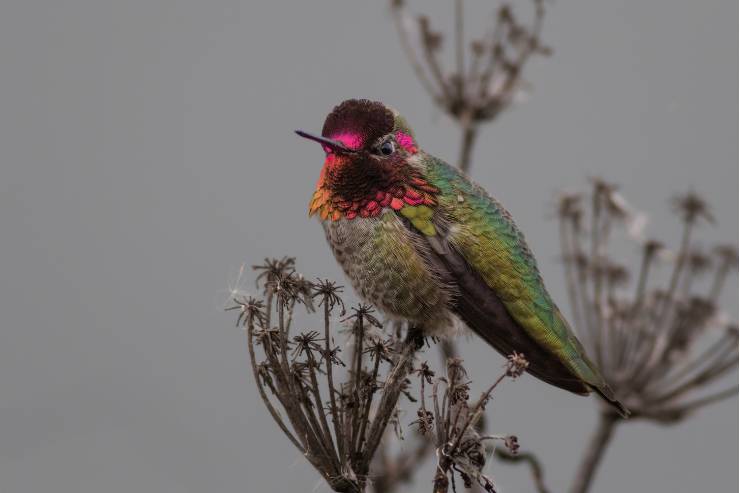
Size and wingspan of Anna’s hummingbird:
- Size: 10 cm (3.9 inches)
- Weight: 3.6g (0.1-0.2 oz)
- Wingspan: 12 cm (4.7 inches)
- Life span: 8–9 years
Habitat: This species is native to the western coasts of the United States and is a rare visitor in New York, with the last sighting being in 2017.
It inhabits open woodland, grasslands, forests, oak savannahs, chaparral and is well adapted to city parks and gardens.
Additionally, they like to breed in open-wooded or shrubby areas and mountain meadows along the Pacific coast from British Columbia to Arizona.
Feeding: These hummingbirds feed on nectar from flowers and tree sap. Occasionally, they also consume small insects and spiders.
3. Rufous hummingbird (Selasphorus rufus)
The rufous hummingbirds are small birds known for their extraordinary flight skills. It fly 2,000 mi (3200 km) during their migratory transits.
A male of this bird has a white breast, rufous face, flanks and tail, and an iridescent orange-red throat patch or gorget. Also, several males have some green on their backs and/ or crowns.
Whereas the female has green, white, and some iridescent orange feathers in the center of the throat, and a dark tail with white tips and a rufous base.
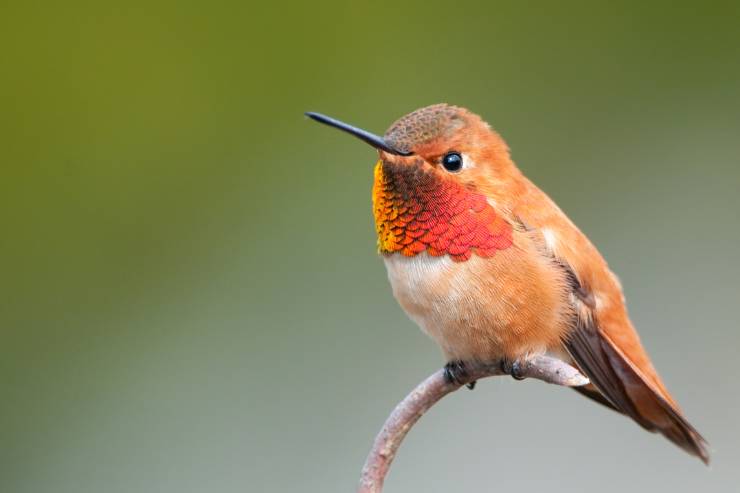
Size and wingspan of Rufous hummingbird:
- Size: 7-9 cm (2.8-3.5 inches)
- Weight: 2-5 g(0.1-0.2 oz)
- Wingspan: 11 cm (4.3 inches)
- Life span: 3–5 years
Habitat: These hummingbirds are considered near-threatened species in New York. They are very rarely spotted in the state, but they were last spotted in Baldwinsville in 2021.
It breeds in western North America from southern Alaska through British Columbia and the Pacific Northwest to California.
They migrate through the Rocky Mountains and nearby lowlands and may stay in one local region for the entire summer. In winter, most birds migrate in the Mexican state of Guerrero.
Feeding: The rufous hummingbirds mostly feed on nectar from colorful flowers and also supply their diet with small insects and spiders.
4. Calliope Hummingbird (Selasphorus calliope)
Calliope hummingbird is the smallest bird native to the United States and Canada. It belongs to the genus Selasphorus.
The standout feature of this bird is the magenta rays on the male’s throat. Both sexes, males and females, are greenish above.
However, males wear a greenish vest below, while, females and immature have a peachy wash across their underparts.
In addition, it has a short tail and short wings that barely extend past the end of the tail. The calliope hummingbird is smaller than a Black-chinned hummingbird.
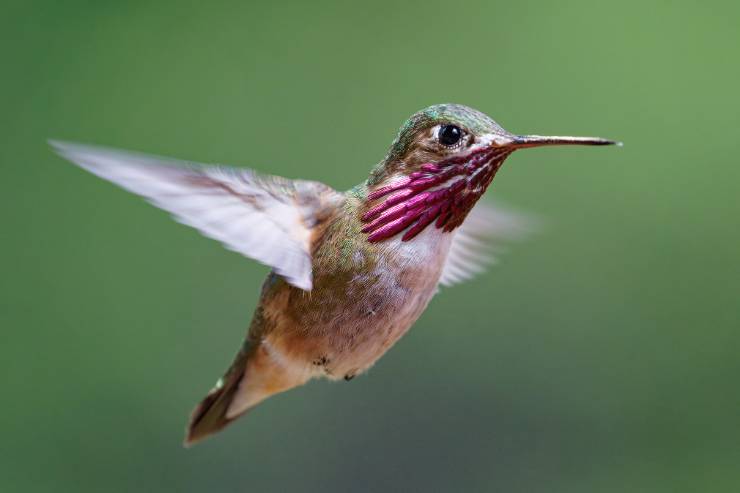
Size and wingspan of Calliope hummingbird:
- Size: 8-9 cm (3.1-3.5 inches)
- Weight: 2.3-3.4 g (0.1-0.1 oz)
- Wingspan: 10.5-11 cm (4.1-4.3 inches)
- Life span: 5–7 years
Habitat: It winters in Central America, then mostly spends its breeding season in the Pacific Northwest and parts of western Canada.
They are considered quiet on the east coast, but they have been spotted in New York a few times. The breeding habitat of this species is varied among open shrub habitats and altitudes.
Feeding: The calliope hummingbirds feed on nectar from flowers and drink sap from holes created by sapsuckers. Sometimes, they will also consume spiders and tiny insects.
Conclusion
Hummingbirds are a vibrant part of New York diverse ecosystem. Despite their small size, they play a significant role in the beauty of the state flora.
From the iridescent Ruby-throated to the fiery Rufous, the delicate Calliope to the vibrant Anna’s, each species of hummingbird brings its splash of color and energy to New York parks and gardens.
Their swift, darting movements and distinctive hum are a source of joy and fascination for birdwatchers and nature lovers alike.
So, the next time you are in New York, pause, look around, and you might just catch a glimpse of these tiny wonders, adding a touch of magic to your day. They are indeed New York flying gems.


